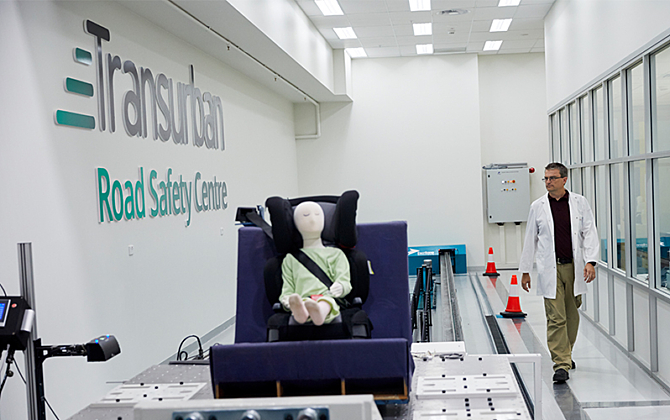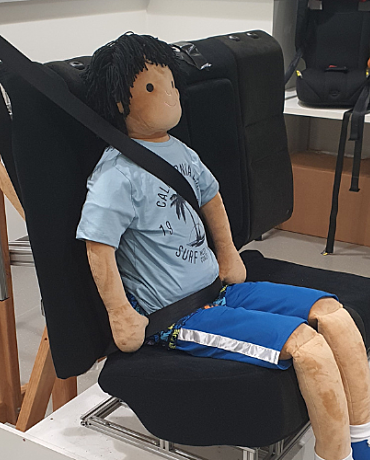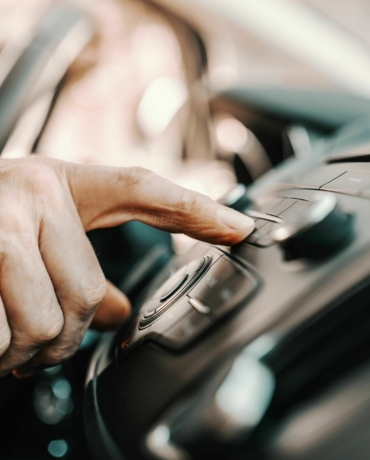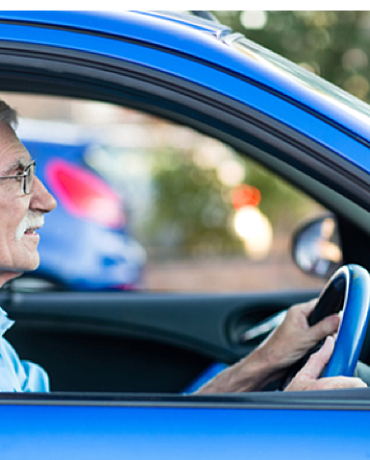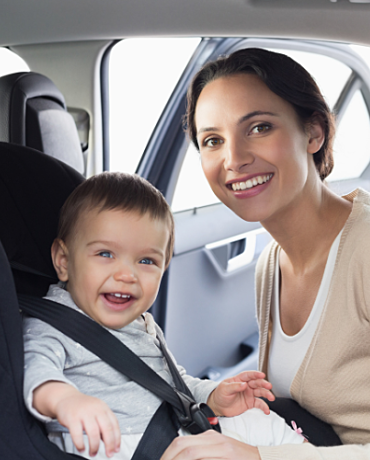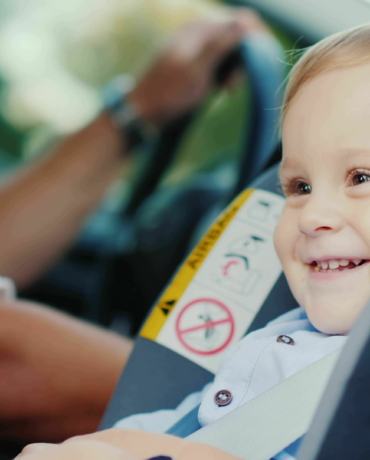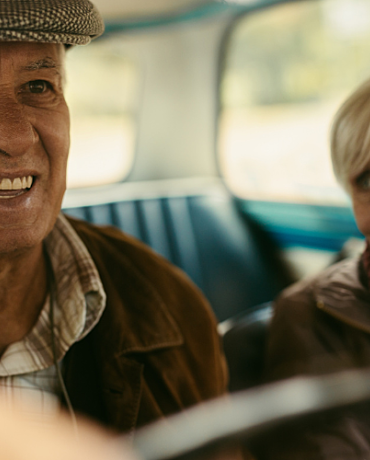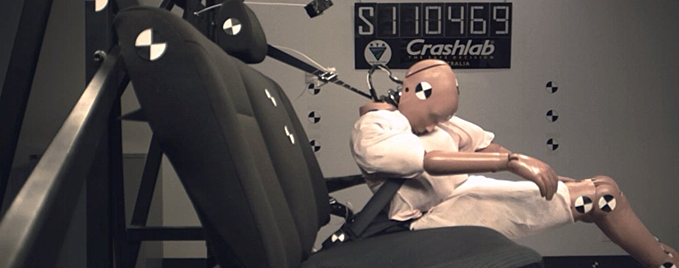For more than 20 years NeuRA researchers have played a leadership role in driving improvements in road safety for Australian children and other road users, producing findings which have translated into changes in legislation and manufacturing specifications.
Our research approaches
Safety in cars
Safety in cars has improved dramatically over the last few decades with enormous improvements in vehicle design and safety systems. However, the focus has been on seats at the front of the car rather than the rear seats. This has meant rear seat safety has not improved much and further work is required to bring it into alignment with the front seats.
Led by Professor Lynne Bilston and Associate Professor Julie Brown, Co-Directors at NeuRA’s Transurban Road Safety Centre, we have examined the relative risk of injury in front and rear seat positions and the injury outcomes for passengers of different ages. Using in-depth crash investigation, we have also identified the sources of injury to rear seat passengers of different ages. Finally, we have examined methods for assessing the protection for rear seat occupants using simulated laboratory crash tests. We then examined how existing technologies, commonly employed in front seat positions, might help to reduce injury risk for rear seat passengers.
As part of our collaborative work with the George Institute for Global Health, we have studied seat belt use in 380 drivers aged 75 years and older. To do this, we spoke to the drivers and observed them in their own vehicles.
Older driver safety and healthy ageing
Driving is critical for enabling mobility and community participation in older Australians, with over 90% of those aged in their 70s being licensed drivers. There is an urgent need for evidence-based methods for enhancing and maintaining older drivers’ skills – methods that are ready for translation into cost-effective and practical interventions.
Led by Scientia Professor Kaarin Anstey and her Dementia and Healthy Ageing team, the Better Drive Trial is a NHMRC-funded, three-arm randomised controlled trial that assesses the effectiveness of different driver education types on safety outcomes for older adults. It explores the relative effectiveness of tailored lessons, road-rule workshops and feedback on older drivers' road safety with the goal of improving driving safety, reducing costs associated with crashes, and maintaining social participation. Find out more or sign up to participate in the Better Drive Trial here.
Prof Anstey’s team is also leading two technology-based studies focused on older driver safety. The National Survey of Adaptive Vehicle Technology, in partnership with National Seniors Australia, is investigating the experiences of older Australians with vehicles that have Automatic Driver Assist Systems (ADAS), that either fully or partially automate driving tasks such as speed control, and lane-keeping and braking. Through this survey, researchers are seeking to identify the factors that influence seniors’ decisions to use these systems while driving, including their knowledge, levels of trust, and sensory and cognitive abilities.
Through the Changing Memory, Technology and Driving study (MemTech), they are also looking at whether in-vehicle GPS devices can detect changes in driver safety associated with cognitive change. Current methods of monitoring road safety for older drivers rely on regular reviews with doctors or expensive and stressful driving tests, which are resource intensive and inefficient. MemTech is looking at whether a dashboard camera and a GPS data logger can be used to accurately measure changes in safety during a driver’s everyday trips, for both older drivers who are experiencing changes in their thinking and memory or early stages of dementia, as well as older drivers without any cognitive difficulties.
Guidelines on vehicle safety for older drivers and passengers
The Vehicle Safety for Older Drivers and Passengers project is a joint initiative by NeuRA and The George Institute which aimed to provide evidence-based guidance for health and road safety professionals who may be advising older people about travelling in vehicles. This project also aimed to provide older people with access to guidance about comfort and safety in vehicles. The guidelines offer targeted advice for practitioners, including specific guidance across three main areas: ensuring comfort and safety, managing cognitive and physical challenges and, alleviating pain and discomfort. A flyer was also created to help older people understand how to travel safely and with comfort. The guidelines were reviewed by industry and Occupational Therapy Australia.
Download guidelines
Download flyerOur research discoveries
NeuRA’s research has demonstrated that rear seat safety has not improved as much as the front seat. For adults, the relative safety in the rear seat is less than what it was in older model vehicles. We found that one in five passengers admitted to hospital following a crash in NSW was seated in the rear seat of the vehicle. The pattern of injury is also different between those injured in the front and rear seat, and this pattern varies with the age of the occupant.
Our data suggests that many people in the rear seat may not be achieving a good seat belt fit. This partly contributes to the seat belt often being the primary source of injury among rear seat occupants. Certainly, rear seat occupants should continue to use their seat belt because it protects them from more serious injury. However, our research demonstrates the need to improve the fit of seatbelts for all occupants using the rear seats. Introducing enhanced technologies could also be used to better manage the loads applied to the body.
This work is informing strategies and programs in Australia and elsewhere to encourage more attention to safety of the rear seat. This includes the inclusion of rear seat safety ratings in consumer information programs like NCAP.
In our study of seat belt use among older drivers, we have seen that most use their seat belt when they travel in a car. However, they have trouble achieving a good seat belt position because they are not aware of the features in their vehicles that could improve their seat belt fit. This includes sash belt height adjustment features, as well as features to modify the height of vehicle seats. Older drivers need to be more aware of the importance of always keeping the sash part of the belts over the mid portion of their shoulder, and keeping the lap part of the belt low across their pelvis.
We have also found that many older drivers report comfort problems when using seat belts. This might be related to poor seat belt fit. However, the discomfort may also be more likely in older drivers who suffer from chronic conditions affecting their physical function, such as osteoporosis and chronic pain. Such drivers often use comfort accessories such as cushions and some of these may have a negative impact on the crash protection provided by a seat belt.
National Child Restraint Best Practice Guidelines
The National Guidelines for the Safe Restraint of Children Travelling in Motor Vehicles, developed by Neuroscience Research Australia (NeuRA) and Kidsafe – The Child Accident Prevention Foundation of Australia, provide best practice recommendations for how to safely transport children in motor vehicles. The 2021 edition of the guidelines are a major update from the previous guidelines published in 2013. Read more about them here.
